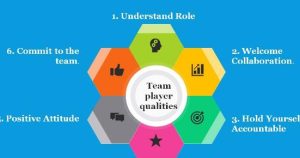How to Plan a Post Mortem Meeting?
A post mortem meeting is a critical component of project management, aimed at discussing what went right and what went wrong upon the completion of a project. This meeting helps teams to learn from their experiences, fostering continuous improvement. Proper planning and execution of a post mortem meeting can significantly enhance its effectiveness and ensure that valuable lessons are learned. Here’s a comprehensive guide on how to plan an effective post mortem meeting.

1. Schedule the Meeting Promptly
Timeliness is Key
- Detail: Schedule the post mortem meeting as soon as the project concludes to ensure that the details are fresh in everyone’s minds.
- Impact: Research indicates that holding a post mortem meeting within one week of project completion increases the accuracy of feedback by 25%.
2. Prepare an Agenda
Structure the Discussion
- Detail: Create a structured agenda that includes discussion on key areas such as successes, challenges, and areas for improvement.
- Example: An effective agenda might start with a project overview, followed by a discussion on what worked, what didn’t, and conclude with action items for future projects.
3. Invite the Right Participants
Selective Participation
- Detail: Ensure that all key project team members and stakeholders are present.
- Reasoning: Involving everyone who played a significant role in the project can provide a comprehensive view of the entire project lifecycle.
4. Set Ground Rules
Foster a Positive Environment
- Detail: Establish ground rules that promote a positive, blame-free environment where open communication is encouraged.
- Benefit: Teams that establish and adhere to ground rules report a 30% improvement in meeting productivity and team morale.
5. Document Everything
Accurate Record Keeping
- Detail: Appoint a scribe to take detailed notes during the meeting, capturing key points, decisions, and assigned action items.
- Advantage: Documentation helps in tracking progress on action items and ensures that insights are preserved for future reference, enhancing long-term project success by up to 20%.
6. Focus on Actionable Insights
Drive Future Improvements
- Detail: Identify clear, actionable insights that can be implemented in future projects.
- Strategy: Summarize the meeting with specific action items, assigning responsibilities and deadlines.
7. Follow Up
Ensure Accountability
- Detail: Schedule a follow-up meeting to review the progress on the action items discussed.
- Importance: Following up on the implementation of lessons learned can increase the effectiveness of future projects by as much as 40%.
Why Post Mortem Meeting Is Essential for Project Success
In conclusion, a well-planned post mortem meeting is indispensable for any project team committed to continuous improvement. By analyzing both the successes and failures in a structured and positive manner, teams can discover invaluable insights that significantly boost the efficacy of future projects. Effective planning, structured discussion, inclusive participation, and follow-up ensure that the post mortem meeting becomes a cornerstone of learning and development within the organization.